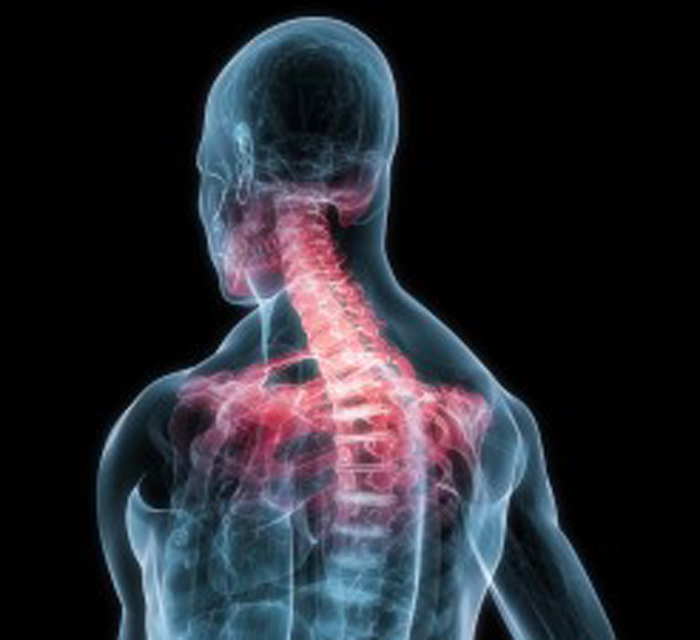Spinal Manipulative Therapy Has an Immediate Effect on Thermal Pain Sensitivity in People With Low Back Pain: A Randomized Controlled Trial
SOURCE: Phys Ther. 2009 (Dec); 89 (12): 1292–1303
Parvaneh Mohammadian, PhD, Antonio Gonsalves, DC, Chris Tsai, DC, Thomas Hummel, MD, and
Thomas Carpenter, DC
Department of Physical Therapy,
University of Florida,
Gainesville, FL 32610-0154, USA.
BACKGROUND: Current evidence suggests that spinal manipulative therapy (SMT) is effective in the treatment of people with low back pain (LBP); however, the corresponding mechanisms are unknown. Hypoalgesia is associated with SMT and is suggestive of specific mechanisms.
OBJECTIVE: The primary purpose of this study was to assess the immediate effects of SMT on thermal pain perception in people with LBP. A secondary purpose was to determine whether the resulting hypoalgesia was a local effect and whether psychological influences were associated with changes in pain perception.
DESIGN: This study was a randomized controlled trial.
SETTING: A sample of convenience was recruited from community and outpatient clinics.
PARTICIPANTS: Thirty-six people (10 men, 26 women) currently experiencing LBP participated in the study. The average age of the participants was 32.39 (SD=12.63) years, and the average duration of LBP was 221.79 (SD=365.37) weeks.
INTERVENTION AND MEASUREMENTS: Baseline demographic and psychological measurements were obtained, followed by quantitative sensory testing to assess temporal summation and Adelta fiber-mediated pain perception. Next, participants were randomly assigned to ride a stationary bicycle, perform low back extension exercises, or receive SMT. Finally, the same quantitative sensory testing protocol was reassessed to determine the immediate effects of each intervention on thermal pain sensitivity.
RESULTS: Hypoalgesia to A-delta fiber-mediated pain perception was not observed. Group-dependent hypoalgesia of temporal summation specific to the lumbar innervated region was observed. Pair-wise comparisons indicated significant hypoalgesia in participants who received SMT, but not in those who rode a stationary bicycle or performed low back extension exercises. Psychological factors did not significantly correlate with changes in temporal summation in participants who received SMT.
There are more articles like this @ our:
LIMITATIONS: Only immediate effects of SMT were measured, so the authors are unable to comment on whether the inhibition of temporal summation is a lasting effect. Furthermore, the authors are unable to comment on the relationship between their findings and changes in clinical pain.
CONCLUSIONS: Inhibition of A-delta fiber-mediated pain perception was similar for all groups. However, inhibition of temporal summation was observed only in participants receiving SMT, suggesting a modulation of dorsal horn excitability that was observed primarily in the lumbar innervated area.
TRIAL REGISTRATION: ClinicalTrials.gov NCT00922220
From the Full-Text Article:
Background
Injury will increase the neuronal excitability within the spinal cord, leading to the activation of pain fibers with less provocation and a heightened pain response. [1] This occurrence, known as central sensitization, is characterized by allodynia (pain perception to a previously nonpainful stimulus) and hyperalgesia (increased magnitude of pain intensity in response to a previously painful stimulus) and is implicated in the progression of acute pain to chronic pain and in the maintenance of chronic pain. [1–3] Subsequently, acute pain resulting from peripheral input may provoke neuroplastic changes within the nervous system and a subsequent shift toward a centrally maintained mechanism of pain. [1, 2] Evidence for a centrally maintained mechanism of pain is observed in a number of musculoskeletal conditions such as fibromyalgia, [4, 5] temporomandibular joint disorder, [6, 7] and whiplash-associated disorder. [8, 9] For example, compared with people who are healthy, individuals with whiplash-associated disorder and temporomandibular joint disorder may have lower pain thresholds at sites distal from the region of injury. [7, 9] The corresponding general hypersensitivity to pain is indicative of a central pain mechanism and suggests neuroplastic changes in pain perception.
Mounting evidence also suggests chronic low back pain (LBP) is characterized by central sensitization. [10–12] For example, individuals experiencing chronic LBP may report greater pain intensity in response to a standard pressure pain stimulus applied to the thumbnail compared with individuals who are pain-free. [12] Consequently, the pain associated with chronic LBP is potentially maintained by centrally mediated mechanisms, and interventions effective in the management of LBP either may prevent the progression of acute pain from a peripheral to a centrally mediated mechanism or directly affect a central mechanism of pain. Consequently, interventions that favorably alter central sensitization may be desirable in the treatment of individuals experiencing LBP.
Read the rest of this Full Text article now!



Leave A Comment